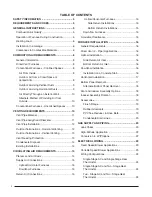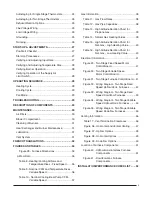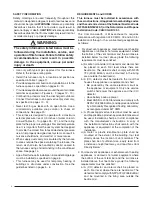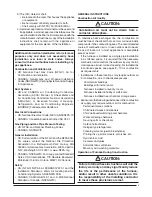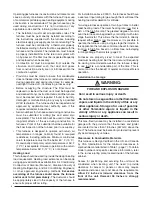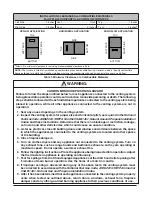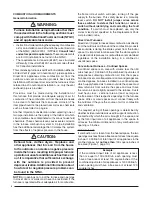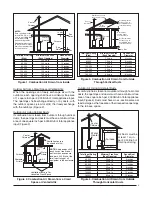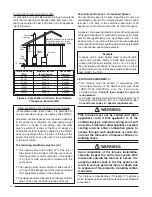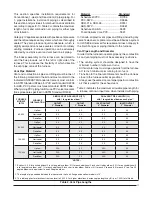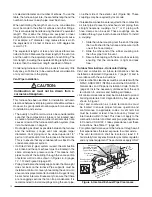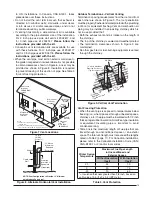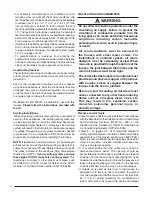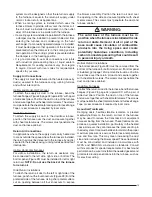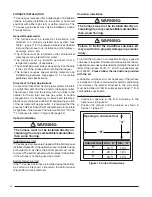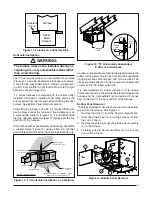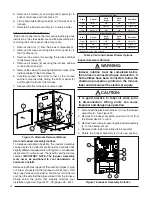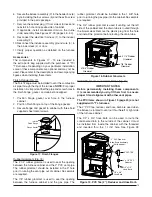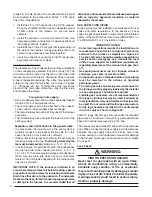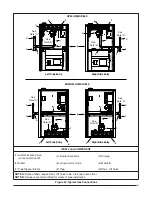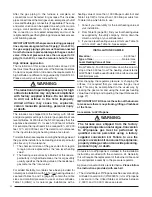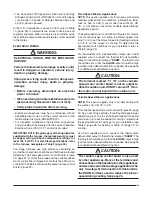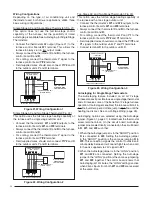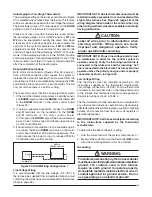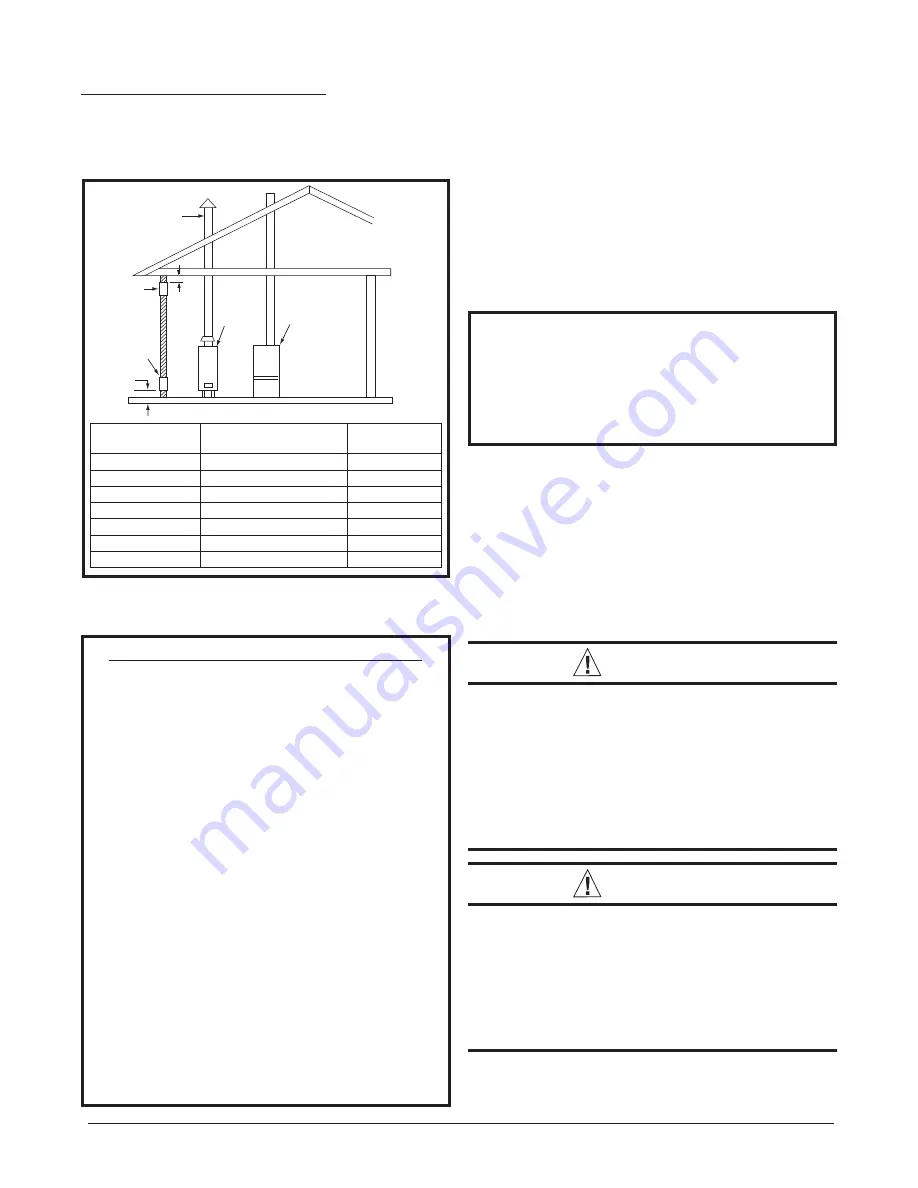
10
Figure 5. Combustion Air Drawn from Outside
Through an Exterior Wall
Total Input Rating
(Btuh)
Minimum Free Area
(Each Opening)
Round Duct
Diameter
40,000
10 sq. In
4 inches
60,000
15 sq. In
5 inches
80,000
20 sq. In
5 inches
100,000
25 sq. In
6 inches
120,000
30 sq. In
6 inches
140,000
35 sq. In
7 inches
160,000
40 sq. In
8 inches
NOTE:
Each opening to outside
must be at least 1 sq. in. per
4,000 Btuh of total input rating.
12" Max.
-------
--
-------
--
Furnace
Water
Heater
Vent or
Chimney
12"
Max
See
Note
See
Note
Alternate Method of Providing Air from Outside:
If acceptable under local Codes, it is permitted to
provide outside air using one opening (See NFGC).
Generally, confi ned spaces must have two openings
in the space for combustion air. One opening must
be within 12 inches of the ceiling, and the other
must be within 12 inches of the fl oor. However, an
alternative method recently adopted by the NFGC
uses one opening within 12 inches of the top of the
space. This method may be used if it is acceptable
to the local codes.
The following conditions must be met:
1. The opening must start within 12” of the top of
the structure and connect with the out of doors
through vertical or horizontal ducts or be ducted
to a crawl or attic space that connects with the
out of doors.
2. The opening must have a minimum free area of 1
sq. in. per 3,000 Btu per hour of the total input rating
of all equipment located in the enclosure.
3. The free area must not be less than the sum of all the
areas of the vent connectors in the enclosure.
Air Directly Through an Exterior Wall
If combustion air is provided directly through an exterior
wall, the two openings must each have free area of at
least one square inch per 4,000 Btuh of total appliance
input (Figure 5).
Conventional Furnaces - Unconfi ned Spaces
An unconfi ned space is an area including all rooms not
separated by doors with a volume greater than 50 cubic
feet per 1,000 Btuh of the combined input rates of all
appliances which draw combustion air from that space.
In general, a furnace installed in an unconfi ned space will
not require outside air for combustion. However, in homes
built for energy effi ciency (low air change rates), it may
be necessary to provide outside air to ensure adequate
combustion and venting, even though the furnace is located
in an unconfi ned space. See example.
Example
:
A space with a water heater rated at 45,000 Btuh
input and a furnace rated at 75,000 Btuh requires a
volume of 6,000 cubic feet [50 x (45 + 75) = 6,000] to
be considered unconfi ned. If the space has an 8 foot
ceiling, the fl oor area of the space must be 750 square
feet (6,000 / 8 = 750).
VENTING REQUIREMENTS
• This furnace must be vented in compliance with
the current revision of the National Fuel Gas Code
(ANSI-Z223.1/NFPA54) and the instr uctions
provided below.
Consult local codes for special
requirements.
• In Canada, venting shall conform to the requirements of
the current (CAN/CGA B149.1 or .2) installation codes.
Consult local codes for special requirements.
WARNING:
This furnace must not be vented with other
appliances, even if that appliance is of the
condensing type. Common venting can result
in severe corrosion of other appliances or their
venting and can allow combustion gases to
escape through such appliances or vents. Do
not vent the furnace to a fi replace chimney or
building chase.
WARNING:
Upon completion of the furnace installation,
carefully inspect the entire fl ue system both
inside and outside the furnace to assure it is
properly sealed. Leaks in the fl ue system can
result in serious personal injury or death due
to exposure of fl ue products, including carbon
monoxide.
This furnace is classifi ed as a “Category IV” appliance,
which requires special venting materials and installation
procedures.


